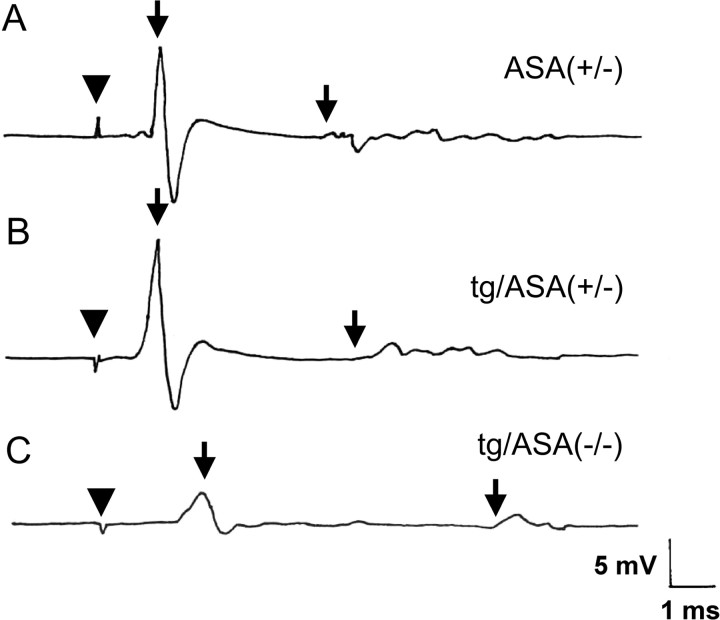Figure 10.
Neurophysiological recordings. Representative traces of motor nerve conduction studies in ASA(+/−) (A), tg/ASA(+/−) (B), and tg/ASA(−/−) (C) mice are shown. After distal stimulation of the tibial nerve at the ankle, CMAP was recorded from the intrinsic foot muscles. A, In an ASA(+/−) mouse, a normal CMAP is seen with a latency of 0.8 ms and an amplitude of 16.6 mV (first arrow). F-wave latency is 4.8 ms (second arrow). B, A tg/ASA(+/−) mouse shows normal distal motor latency and amplitude of the CMAP and F-wave latency. C, In the tg/ASA(−/−) mouse, the distal latency is prolonged to 1.48 ms, and the CMAP amplitude is reduced to 4.8 mV (first arrow). F-wave latency is prolonged at 8.3 ms (second arrow) (arrowhead indicates stimulation artifact).

